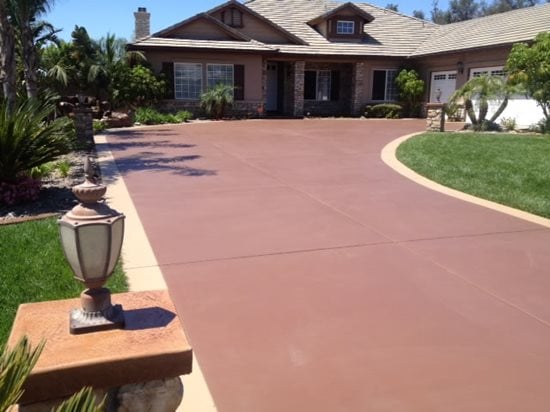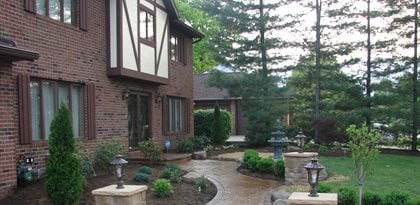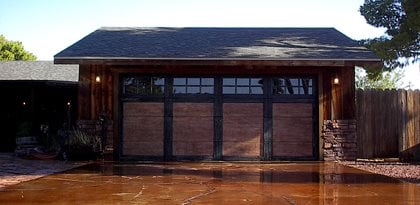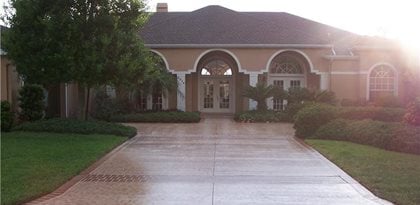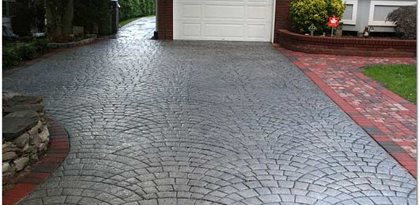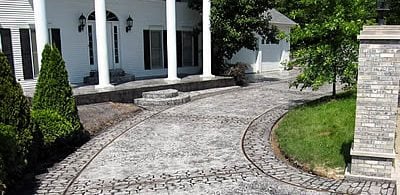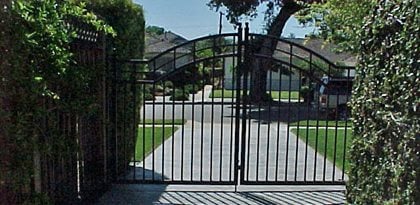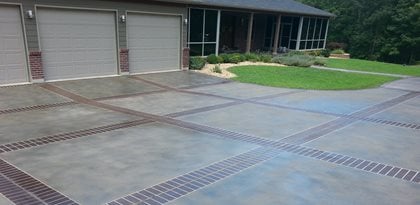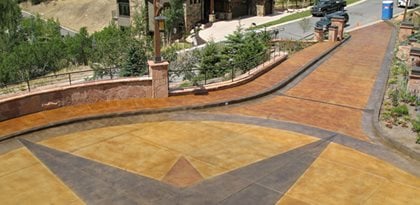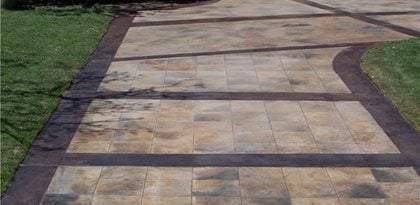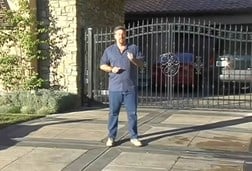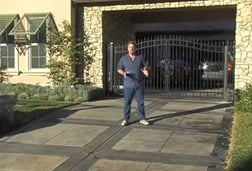- Concrete Driveways Info
- Concrete Driveway Pictures
- Exposed Aggregate
- Stamped Concrete Driveways
- Stained Concrete Driveways
- Modern Concrete Driveways
- Driveway Width
- Concrete Driveway Projects: Submitted by driveway contractors across the U.S.
- Concrete Driveway Cost
- Installing and Maintaining Concrete Driveways
- Concrete Driveway Construction Basics
- How to Clean a Concrete Driveway
- Concrete Driveway Maintenance
- Concrete Driveway Resurfacing
- Concrete Driveway Repair
- Driveway Sealer for Concrete
- Related Information
- Design Ideas: Concrete Driveway Info
- Concrete Contractors: Find Concrete Products and Suppliers
Colored Concrete Driveways
Get design ideas for coloring concrete driveways, plus find out the top coloring methodsOne of the biggest draws of decorative concrete driveways is the expansive range of coloring options available, allowing you to change your driveway from plain gray into just about any hue imaginable. What’s more, you can combine or layer various coloring methods to create one-of-a-kind custom color schemes.
Browse our gallery of concrete driveway pictures
HOW TO CHOOSE A DRIVEWAY COLOR
Get help picking the best colors from a local concrete driveway contractor. They often can bring physical samples to your house or do mockups on site.
When choosing what color, you want to use for your driveway, there are a few ideas that you should consider when making that decision.
- Match the color scheme of your house – complimenting the existing colors of your home makes your driveway look like a natural fit
- Light colors reflect heat, dark absorb it – colors can impact your surface’s ability to handle the heat, impacting whether it is a surface you can walk bare-foot on
- Match coloring of stamped pattern – use the chosen pattern of natural stones or bricks to help determine which colors will make that pattern look more realistic
DESIGN IDEAS FOR COLORED CONCRETE DRIVEWAYS
Learn more about the most popular options for coloring concrete driveways, and see projects showcasing the wide range of looks that are possible.
Earth-toned concrete driveways
Shades of brown, tan, sandy beige and other earth-tones are by far the most popular color choices for concrete driveways because they blend in well with the landscape and complement most home exteriors. In addition, darker earth-toned shades hide dirt, tire marks and stains, making the driveway easier to maintain. See these examples of earth-toned concrete driveway projects.
Concrete driveways in shades of gray
Gray concrete driveways don’t have to look boring and ordinary. With the addition of darker gray color accents, such as pewter or charcoal, they can be given the rich look of slate or weathered flagstone. Layering various shades of gray is a popular way to create unique antiquing effects.
Multicolored concrete driveways
By using a broader spectrum of colors and coloring methods, contractors can give concrete driveways artistic faux finishes, decorative medallions, and stunning accent borders. Often these finishes require more skill, time and effort to install, but the results are truly amazing and can transform the look of your home.
DRIVEWAY COLORING TECHNIQUES
Coloring techniques run the gamut from stains, color hardeners, integral coloring admixtures and more.
Integral coloring admixtures infuse concrete with rich, long-lasting, fade-resistant color. It’s a popular option for driveways because the color runs throughout the entire slab and will not wear away under vehicle traffic. This coloring method also works well as a backdrop for contrasting accent or antiquing colors, such as pigmented release agents and stains. See Integral Color.
Acid, or chemical-based, concrete stains are an economical and highly versatile way to color both new and existing concrete driveways. Stains can be applied by hand after the concrete sets, giving contractors the ability to add subtle hints of color or bolder design accents. Acid stains penetrate and react chemically with the concrete, creating natural color variations that add character and unique mottling effects. However, the color selection is generally limited to subtle earth tones, such as tans, browns, terra cottas, and soft blue-greens. See Stained Concrete Driveways.
Water-based stains (typically a blend of acrylic polymers and pigments) penetrate the concrete to produce permanent color, ranging from translucent to opaque depending on the product. They go beyond the subtle color effects of acid-based stains and come in a much broader spectrum of hues. Most manufacturers offer dozens of standard colors to choose from (see these concrete stain color charts).
Dry-shake color hardeners and antiquing agents are the most popular coloring methods for stamped concrete driveways, because they produce realistic color variations similar to natural stone. Because the color is concentrated at the surface, it tends to be more intense than integral color. See Color Concrete with Concrete Color Hardener.
Concrete paint is a low-cost way to introduce color to your existing driveway. It offers a wide range of colors in multiple hues. While the color is vibrant at application, it is not permanent. You will have to reapply it every 1-2 years, depending on the weather in your area, and the use of your driveway.
RELATED:
Colored Concrete Patios
Concrete Pool Deck Color Ideas
